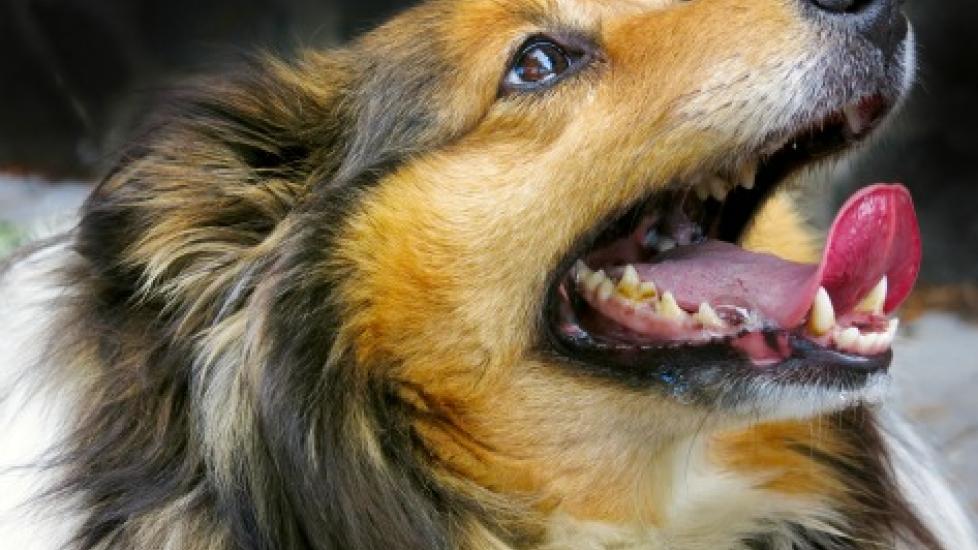Title: Stained and Discolored Teeth in Dogs: Causes, Prevention, and Treatment
Introduction:
In the canine world, a bright smile is not just about aesthetics; it’s a sign of good health. However, many dog owners are faced with the challenge of maintaining their furry friends’ pearly whites due to discoloration or staining. These issues not only affect appearance but may also lead to dental problems that can impact your pet’s overall well-being. Understanding the causes, prevention strategies, and treatment options for stained teeth in dogs is crucial for keeping our beloved companions healthy and happy.
Causes of Dog Tooth Stains:
1. Dietary Factors: Certain foods and beverages, especially those containing tannins (found in tea, coffee, red wine), can cause stains on teeth if consumed regularly by dogs.
2. Tartar Buildup: Plaque hardening into tartar is a common culprit behind yellowing or brownish hue of dog teeth. Regular brushing helps prevent this buildup.
3. Medications: Some medications, particularly antibiotics, can alter the pH balance in the mouth, making it easier for bacteria to grow and causing discoloration over time.
4. Inadequate Oral Hygiene: Failing to brush your dog’s teeth frequently enough can lead to plaque accumulation, which then turns into calculus (tartar) and stains enamel.
5. Genetics: Just like humans, some breeds are predisposed to certain tooth conditions that might result in discoloration. For example, white dogs with pink skin around their mouths could develop dark spots from exposure to sunlight.
6. Age-Related Changes: As dogs age, their gums recede, exposing more of the root surface which naturally has a darker color than the rest of the tooth structure. This can give an overall yellower tone to older pets’ smiles.
7. Disease Processes: Diseases such as kidney failure or liver disease can lead to changes in blood chemistry that manifest as tooth discoloration because they affect how waste products are eliminated through urine and feces instead of saliva where these substances often contribute towards stain formation within oral cavities without proper hygiene practices being taken into account first before considering any other factors contributing toward poor oral care standards among others who share similar traits regarding genetics/heredity aspects when dealing with inherited traits associated with specific types/breeds involved here today!
Prevention Strategies:
1. Daily Brushing: Regularly brushing your dog’s teeth using a soft-bristled brush and veterinarian-approved toothpaste is key to preventing plaque buildup and subsequent staining.
2. Dental Chews and Treats: Incorporate chew toys, bones, or specially formulated dental treats into your dog’s routine to help reduce plaque and promote gum health.
3. Professional Cleanings: Schedule regular professional cleanings with your vet or at a veterinary dentist to ensure thorough removal of tartar and debris.
4. Nutritious Diet: Choose high-quality food free from artificial colors and flavors that could potentially stain teeth. Consider consulting with a veterinary nutritionist for personalized dietary recommendations.
5. Avoid Staining Substances: Limit your dog’s access to known staining agents such as coffee, tea, and red wine, and be cautious with colored human foods.
6. Regular Checkups: Have your dog undergo regular dental checkups with the veterinarian to identify early signs of discoloration or other oral health issues.
Treatment Options:
1. Veterinary Care: Your vet may prescribe special rinses, gels, or even systemic treatments to address underlying causes of tooth staining, including infections or metabolic disorders.
2. Professional Cleaning: If staining is severe, a deep cleaning under anesthesia may be necessary to remove heavy deposits of tartar and restore the natural shade of your dog’s teeth.
3. At-Home Remedies: There are various home remedies suggested by pet enthusiasts, such as baking soda paste or hydrogen peroxide solutions, but always consult with a veterinarian before trying these methods to ensure safety for your pet.
4. Aesthetic Procedures: In rare cases, cosmetic procedures like bonding or veneers might be considered for severely stained or damaged teeth.
Conclusion:
Maintaining your dog’s oral health involves consistent effort and attention to detail. By understanding the causes of tooth staining and implementing preventive measures, you can significantly reduce its occurrence. Regular professional cleanings combined with diligent daily care at home will go a long way in preserving your pup’s beautiful grin while ensuring his lifelong comfort and vitality remain intact – after all isn’t having them around worth every bit?
